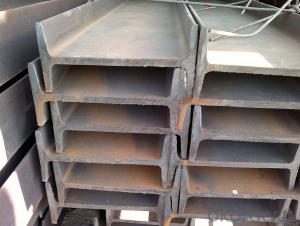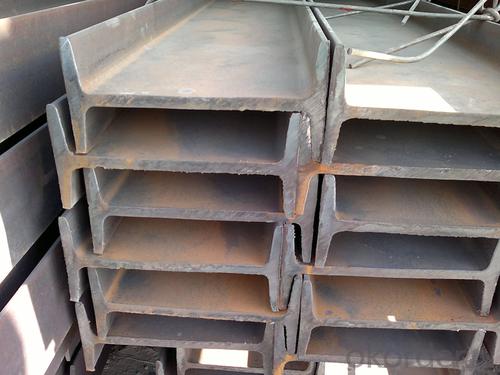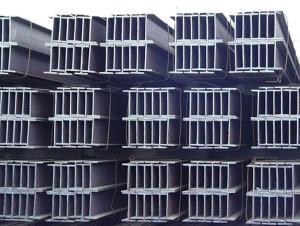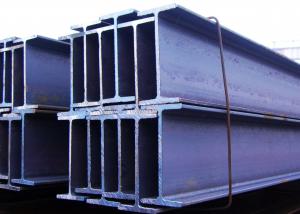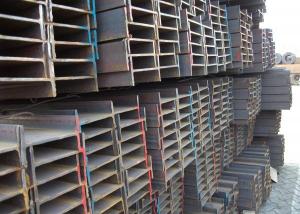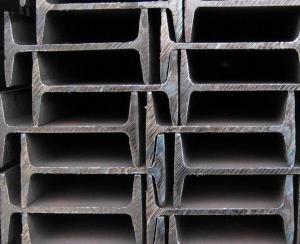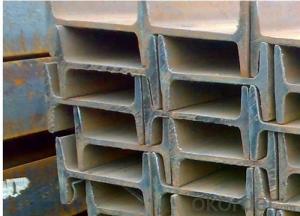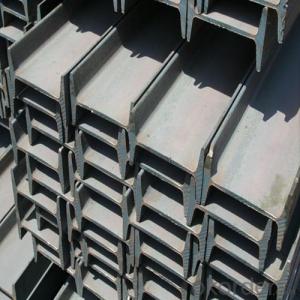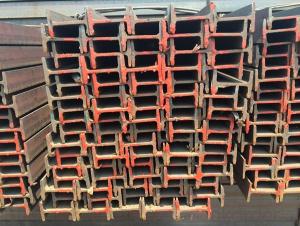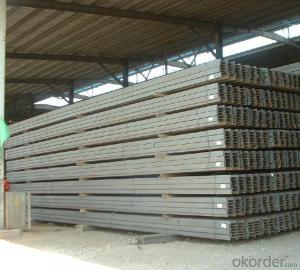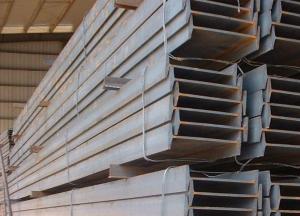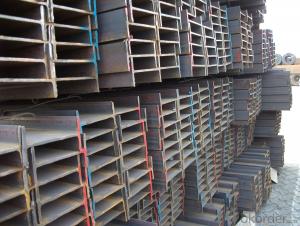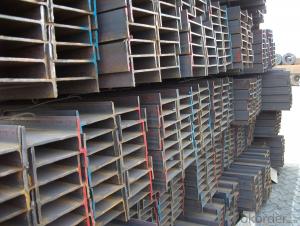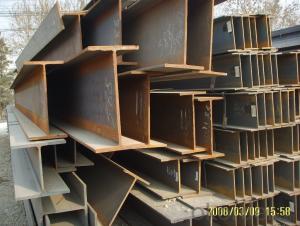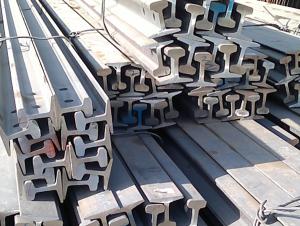European Standard IPE80 with High Quality
- Loading Port:
- Tianjin
- Payment Terms:
- TT OR LC
- Min Order Qty:
- 25 m.t
- Supply Capability:
- 15000 m.t/month
OKorder Service Pledge
OKorder Financial Service
You Might Also Like
Product Description of European Standard IPE80 with High Quality:
Specifications of European Standard IPE80 with High Quality:
1.Standard: EN10025
2.Material: S235JR or Equivalent
3.Length: 6m, 12m
4. Size:
Size (mm) | Mass (kg/m) |
| 80*46*3.8 | 6.00 |
Usage & Applications of European Standard IPE80 with High Quality:
Commercial building structure;
Pre-engineered buildings;
Machinery support structures;
Prefabricated structure;
Medium scale bridges.
Packaging & Delivery of European Standard IPE80 with High Quality:
1. Transportation: the goods are delivered by truck from mill to loading port, the maximum quantity can be loaded is around 40MTs by each truck. If the order quantity cannot reach the full truck loaded, the transportation cost per ton will be little higher than full load.
2. With bundles and load in 20 feet/40 feet container, or by bulk cargo, also we could do as customer's request.
3. Marks:
Color mark: There will be color marking on both end of the bundle for the cargo delivered by bulk vessel. That makes it easily to distinguish at the destination port.
Tag mark: There will be tag mark tied up on the bundles. The information usually including supplier logo and name, product name, made in China, shipping marks and other information request by the customer.
If loading by container the marking is not needed, but we will prepare it as customer's request.
FAQ:
We have organized several common questions for our clients, may help you sincerely:
1. How to inspect the quality?
We have a professional inspection group which belongs to our company. We resolutely put an end to unqualified products flowing into the market. At the same time, we will provide necessary follow-up service assurance.
We have established the international advanced quality management system,every link from raw material to final product we have strict quality test;We resolutely put an end to unqualified products flowing into the market. At the same time, we will provide necessary follow-up service assurance.
2. Is there any advantage about this kind of product?
Steel I beam bar IPE has a reduced capacity in the transverse direction, and is also inefficient in carrying torsion, for which hollow structural sections are often preferred.
Images of European Standard IPE80 with High Quality:
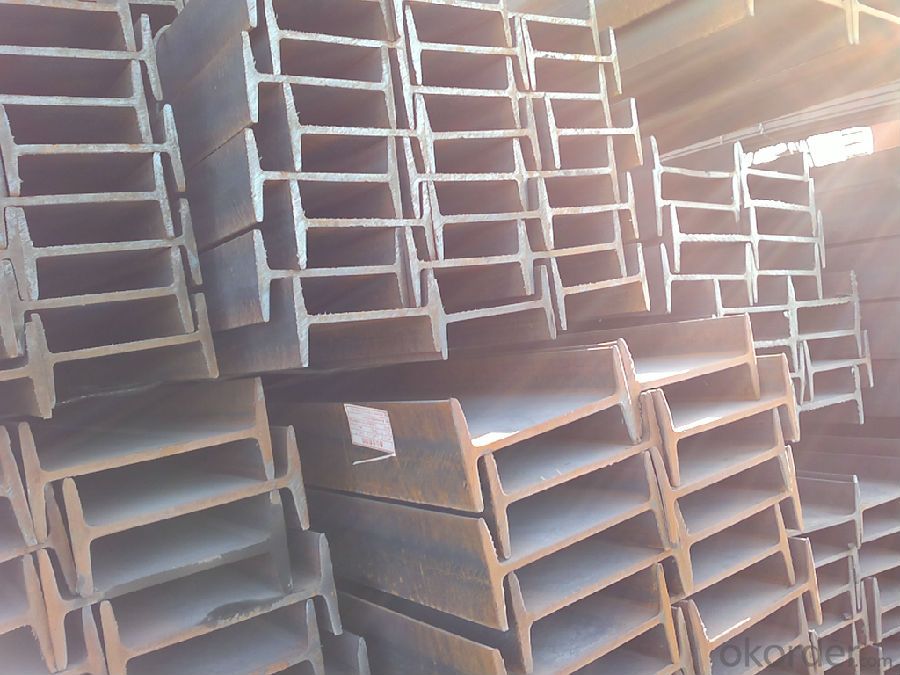

*If you would like to get our price, please inform us the size, standard/material and quantity. Thank you very much for your attention.
- Q: Are there any special considerations when designing with steel I-beams in residential applications?
- Yes, there are several special considerations when designing with steel I-beams in residential applications. Firstly, it is important to consider the load-bearing capacity of the I-beams. Unlike wood or other materials, steel I-beams have high strength-to-weight ratio, allowing them to support heavy loads. However, it is crucial to accurately calculate the loads and forces that will be applied to the beams in order to ensure they are adequately sized and spaced to provide sufficient support. Another consideration is the proper installation and support of the I-beams. Steel I-beams require proper bracing and connections to ensure they are securely fastened and can effectively transfer loads to the foundation or supporting structure. It is important to consult with a structural engineer or other qualified professional to determine the appropriate installation methods and ensure compliance with local building codes. Additionally, steel I-beams can be susceptible to corrosion if not properly protected. In residential applications, where the beams may be exposed to moisture or other corrosive elements, it is important to use appropriate protective coatings or treatments to prevent rust and deterioration. Regular inspections and maintenance should also be performed to identify and address any signs of corrosion. Fire protection is another consideration when designing with steel I-beams. While steel is inherently fire-resistant, prolonged exposure to high temperatures can weaken the beams. Therefore, it may be necessary to incorporate fire-resistant materials, such as spray-on fireproofing or fire-rated drywall, to enhance the fire resistance of the overall system. Lastly, it is important to consider the aesthetic aspect of steel I-beams in residential applications. While some homeowners may appreciate the industrial or modern look of exposed steel beams, others may prefer a more traditional or concealed appearance. Designers and architects should take into account the homeowner's preferences and explore creative solutions to integrate the steel I-beams into the overall design scheme. In summary, when designing with steel I-beams in residential applications, special considerations include load-bearing capacity, proper installation and support, corrosion protection, fire protection, and aesthetic integration. Consulting with professionals and adhering to local building codes will ensure that the design is safe, durable, and meets the specific needs and preferences of the homeowner.
- Q: How do you calculate the torsional deflection of a steel I-beam?
- In order to determine the torsional deflection of a steel I-beam, it is necessary to consider various factors and utilize relevant formulas. Provided below is a detailed guide outlining the step-by-step process for calculating the torsional deflection: 1. Acquire the required information: Commence by collecting the necessary data, which includes the dimensions of the I-beam such as its height (h), flange widths (b1 and b2), flange thicknesses (t1 and t2), and the length of the beam (L). 2. Establish the material properties: Identify the properties of the steel being utilized, particularly the modulus of rigidity (G) or shear modulus. This value represents the material's resistance to shear deformation and is fundamental for the calculations. 3. Compute the cross-sectional area: Determine the cross-sectional area of the I-beam by subtracting the area of two rectangles (flanges) from the area of one rectangle (web). The area of the web can be calculated as A = h * (b1 - t1 - t2) + b2 * t2. 4. Ascertain the polar moment of inertia: The polar moment of inertia (J) signifies a beam's resistance to torsional deformation. It can be calculated using various formulas depending on the shape of the cross-section. For an I-beam, the formula is J = (b1 * t1^3 + b2 * t2^3) / 3. 5. Determine the maximum shear stress: The maximum shear stress (τ) induced by torsional loading can be calculated using the formula τ = T * r / J, where T denotes the applied torque and r represents the distance from the center of the beam to the outermost point on the cross-section. 6. Establish the torsional deflection: The torsional deflection (θ) can be determined using the formula θ = T * L / (G * J), where T denotes the applied torque, L signifies the length of the beam, G represents the shear modulus, and J denotes the polar moment of inertia. By following these steps and substituting the appropriate values, it is possible to calculate the torsional deflection of a steel I-beam. It is important to note that these calculations provide an approximate value and should be verified by a professional engineer to ensure accuracy and safety.
- Q: How do engineers determine the appropriate size of steel I-beams for a specific application?
- Engineers determine the appropriate size of steel I-beams for a specific application by considering various factors such as the load requirements, span length, and the type of structure. They use structural analysis techniques and mathematical calculations to determine the maximum bending moment, shear force, and deflection that the I-beam will experience. By evaluating these factors, engineers can select an I-beam size that can safely support the load and meet the structural and safety requirements of the application.
- Q: How do steel I-beams contribute to sustainability in construction?
- Sustainability in construction is enhanced by the presence of steel I-beams, which offer a range of benefits: 1. Enhanced Durability: Steel is renowned for its durability, enabling structures constructed with steel I-beams to withstand adverse weather conditions, seismic activity, and fire. Consequently, the longevity of these structures is increased, reducing the need for frequent repairs or replacements and minimizing waste. 2. Recyclability: Steel is among the most recycled materials globally. At the end of a structure's life cycle, steel I-beams can be easily recycled and utilized in the production of new steel products. This diminishes the demand for virgin steel production, conserves natural resources, and reduces energy consumption and greenhouse gas emissions associated with manufacturing processes. 3. Reduced Weight: Steel I-beams possess a high strength-to-weight ratio compared to alternative construction materials. This means they offer robust structural support while using less steel material. Additionally, the reduced weight facilitates more efficient transportation, leading to decreased fuel consumption and carbon emissions during shipping. 4. Versatility: Steel I-beams provide significant design flexibility, empowering architects and engineers to create innovative and sustainable structures. These beams are readily customizable to meet diverse architectural requirements and can support large spans, minimizing the need for additional columns or supports. Such flexibility enhances the efficiency and adaptability of buildings, promoting long-term sustainability. 5. Enhanced Energy Efficiency: Steel I-beams contribute to a building's energy efficiency by enabling larger window and door openings. This allows for increased natural light and ventilation, reducing the dependency on artificial lighting and HVAC systems. Furthermore, steel I-beams can be combined with insulation materials to create high-performance building envelopes, enhancing thermal efficiency and decreasing energy consumption. In summary, steel I-beams play a vital role in sustainable construction by offering durability, recyclability, lightweight design, versatility, and energy efficiency. These attributes contribute to the reduction of environmental impact, preservation of resources, and the creation of resilient and sustainable structures.
- Q: Can steel I-beams be welded together?
- Yes, steel I-beams can be welded together. Welding is a common method used to join two or more steel I-beams to create a larger and stronger structural member. The process typically involves fusing the beams together using a high-temperature welding technique, such as arc welding or gas welding. Welding not only provides a strong bond between the beams but also maintains the continuity of the load-carrying capacity across the joint. However, it is important to ensure that the welding is done by a certified welder and that the proper welding procedures and techniques are followed to maintain the structural integrity and safety of the welded I-beams.
- Q: What is the ear board, that is, attached to the wall and fixed on the building of the connection between the I-beam that, how to draw ah?
- Commonly known as ear plate is the connection board, or gusset plate. In the steel structure, the connection between the members of the steel structure is mostly done by using the connecting plate as the transition piece to enlarge the connection surface. The connecting plate can be riveted, riveted or welded.
- Q: What are the different design considerations for steel I-beams in industrial applications?
- When designing steel I-beams for industrial applications, various design considerations need to be taken into account to ensure their structural integrity and efficiency. These considerations include: 1. Load Capacity: The primary consideration is the maximum load that the I-beam will need to support. This includes both the dead load (the weight of the beam itself) and the live load (the weight of the objects or machinery being supported). The beam must be designed to safely handle these loads without excessive deflection or failure. 2. Span Length: The length of the beam span plays a crucial role in its design. Longer spans typically require larger and stronger beams to support the load. The beam's depth and flange width must be carefully determined to ensure its ability to resist bending and shear forces. 3. Material Selection: The choice of steel material is essential for the strength and durability of the I-beam. Factors such as yield strength, tensile strength, and ductility are considered when selecting the appropriate steel grade. Additionally, factors like corrosion resistance may be important depending on the application's environment. 4. Shape and Dimensions: The overall shape and dimensions of the I-beam are critical for its performance. The depth, flange width, and web thickness must be carefully chosen to achieve the desired strength and stiffness. These dimensions also impact the beam's weight and cost, so a balance must be struck between structural requirements and practical considerations. 5. Connection Design: The connections between I-beams and other structural elements must be designed to ensure load transfer and overall stability. Factors like bolt size, weld type, and reinforcement may be considered to achieve robust connections. 6. Deflection and Vibration Control: Excessive deflection or vibration can compromise the performance and safety of the I-beam. Design considerations must include calculations for deflection limits and potential vibration control measures, such as adding stiffeners or dampening devices. 7. Fire Resistance: In some industrial applications, fire resistance may be a crucial factor. Steel I-beam designs may incorporate fireproofing measures, such as intumescent coatings or additional insulation to maintain the structural integrity of the beam during a fire. 8. Cost and Fabrication: The cost-effectiveness of the I-beam design is an important consideration. The design should seek to minimize material usage while still meeting the required strength criteria. Additionally, the chosen design should be practical for fabrication and installation processes. By carefully considering these design considerations, engineers can create steel I-beams that meet the specific requirements of industrial applications, balancing strength, durability, and cost-effectiveness.
- Q: What are the considerations for accessibility and universal design with steel I-beams?
- When considering accessibility and universal design with steel I-beams, several factors need to be taken into account. Firstly, it is important to ensure that the I-beams are designed and installed in a manner that allows for easy access and movement of individuals with disabilities. This may involve incorporating features such as ramps, elevators, or lifts to ensure barrier-free access to different levels or areas supported by the I-beams. Additionally, the dimensions and clearances around the I-beams should be carefully planned to provide sufficient space for individuals using mobility aids, such as wheelchairs or walkers, to maneuver comfortably. This includes considering doorways, corridors, and other passageways supported by the I-beams. Furthermore, it is crucial to select materials and finishes for the I-beams that minimize any potential hazards or obstacles for those with visual impairments. This may involve using contrasting colors or textures to enhance visibility and reduce the risk of tripping or collision. In summary, accessibility and universal design considerations for steel I-beams involve ensuring easy access, sufficient maneuvering space, and minimizing potential hazards or obstacles for individuals with disabilities.
- Q: What are the different methods of protecting steel I-beams from fire?
- There are several methods for protecting steel I-beams from fire. One common method is the application of fire-resistant coatings or intumescent paints, which expand when exposed to heat, forming an insulating layer that slows down heat transfer to the steel. Another method is the use of fire-resistant insulation materials, such as mineral wool or ceramic fiber, which are wrapped around the beams to provide thermal protection. Additionally, fireproofing sprays or boards can be applied to the beams to prevent them from reaching critical temperatures during a fire. Finally, encasing the I-beams in fire-rated materials, such as concrete or gypsum board, is another effective way to protect them from fire damage.
- Q: Can steel I-beams be used in curved or sloped designs?
- Yes, steel I-beams can be used in curved or sloped designs. While I-beams are typically used in straight construction applications, they can also be utilized in curved or sloped designs with certain modifications and techniques. One method is to cut the I-beam into smaller sections and then weld or bolt them together to create the desired curved or sloped shape. This process may require additional engineering considerations to ensure the structural integrity of the beams. Alternatively, custom-shaped I-beams can be manufactured specifically for curved or sloped designs. These custom beams are fabricated by bending or rolling the steel to the desired shape. However, it is important to note that curved or sloped designs using steel I-beams may require more complex calculations and engineering expertise to ensure the structural stability and safety of the construction. Therefore, it is recommended to consult with a structural engineer or a professional in the field when considering the use of steel I-beams in curved or sloped designs.
Send your message to us
European Standard IPE80 with High Quality
- Loading Port:
- Tianjin
- Payment Terms:
- TT OR LC
- Min Order Qty:
- 25 m.t
- Supply Capability:
- 15000 m.t/month
OKorder Service Pledge
OKorder Financial Service
Similar products
Hot products
Hot Searches
Related keywords
